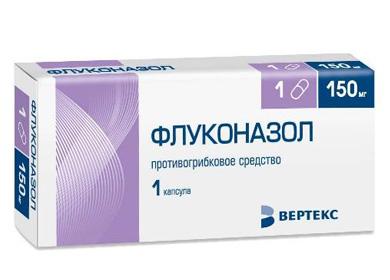The content of the article
Among the infectious pathologies in women, candidiasis accounts for 30 to 45% of cases of all visits to the gynecologist. Most often, this pathology occurs in women with the onset of an active sexual life, it is relatively rarely detected in the period of pre- and postmenopause. As a rule, the causative agent of the disease is Candida albicans, this subspecies of the fungus is usually detected in acute cases of candidiasis. Less often, under microscopy, a subspecies of Candida glabrata is detected, its presence is characteristic of the chronic course of the pathology and is often associated with clinical cases resistant to therapy.
A feature of candida is the presence of phospholipase on their cell wall, which allows them to penetrate into epithelial cells. Thus, in the presence of certain conditions, this fungus is capable of reproduction and causes an inflammatory process.
Why does candidiasis appear and how does it manifest?
Most experts attribute Candida fungus to an opportunistic flora. That is, it can be detected on the mucous membrane of the genital organs and in healthy women. Factors provoking the occurrence of candidal vulvovaginitis, I can be:
- mechanical - traumatic injury, prolonged use of the intrauterine device;
- physiological - period of pregnancy, monthly;
- endocrine - diabetes mellitus, insufficient production of thyroid hormones;
- iatrogenic - taking antibiotics, hormonal drugs;
- diseases - gastrointestinal tract (dysbiosis), immunodeficiency states.
In most cases, the reproduction of the fungus is limited to the upper layers of the vaginal epithelium. However, in the presence of certain factors weakening local immunity, the spread of the fungus in the submucosal layer can occur, followed by overcoming tissue barriers and dissemination in the body.
Typically, local manifestations of candidal vulvovaginitis are limited to the following symptoms:
- itching in the vulva and vagina;
- burning sensation during urination;
- pain during intercourse;
- allocation of a cheesy character from the genital tract.
These symptoms significantly reduce a woman’s quality of life, often cause psychological discomfort and disrupt family life. With the course, candidal vulvovaginitis can be acute or chronic. In the latter case, the frequency of exacerbations should be at least four cases during the year.
How to treat this pathology
For several years, "Fluconazole" is the drug of choice for the treatment of candidal lesions of various localization.The mechanism of action of a complex chemical compound in its composition is to block the synthesis of ergosterol, an important component of the fungal cell membrane. Thus, the permeability of its cell wall increases and reproduction is blocked. An important advantage of Fluconazole is its lack of influence on the production of steroid hormones (testosterone, cortisol), unlike other antifungal drugs, such as ketoconazole.
Other important benefits of Fluconazole are that it:
- possesses high antifungal activity;
- valid for a long time;
- fungal resistance rarely develops to it;
- goes well with other medicines;
- does not kill beneficial bacteria (lactobacillus and bifidobacteria);
- has a very short course of treatment;
- safe when taken orally;
- has a low cost.
"Fluconazole" effectively inhibits the growth of most causative agents of candidiasis, only a small percentage of them are resistant to this drug. After oral administration, the drug is almost completely absorbed in the gastrointestinal tract. Moreover, the intake of food does not affect its bioavailability. Therefore, it does not matter when to drink the medicine, before or after meals, in any case, it is absorbed quite well in the gastrointestinal tract (GIT). Its maximum concentration in the blood is determined within an hour and a half after the start of treatment.
Instructions for use "Fluconazole"
The main indications for the use of this drug are:
- candidiasis vulvovaginitis;
- candidiasis of the respiratory, urinary system, gastrointestinal tract;
- dermatological fungal diseases;
- generalized fungal infection.
This pharmaceutical product is available in the form of capsules containing 50 or 150 mg of the main active substance. The package may contain a different number of such capsules: one, three or ten.
Genital candidiasis
Typically, the regimen of administration of "Fluconazole" for vulvovaginal candidiasis is prescribed by the attending gynecologist. The number of capsules and the duration of treatment depend on the severity of the process, the presence of relapses and complications.
In acute candidiasis of the reproductive system, it is enough to drink "Fluconazole" in a dosage of 150 mg. The capsule should be swallowed whole and washed down with a sufficient amount of liquid. According to doctors and patients, after "Fluconazole" discharge is significantly reduced and itching disappears. In some cases, you may need to take the drug again after two days.
Also, most gynecologists recommend combining the intake of antimycotics inside and drugs for local treatment, administered vaginally (suppositories, ointments). In the presence of concomitant sexually transmitted infections (with chlamydiadetecting ureaplasmas, mycoplasma) may require additional prescription of antibiotics.
Scheme of "Fluconazole" in chronic thrush in women, the following: the medicine is taken once a month with menstruation in a dosage of 150 mg. The duration of therapy can be from four months to a year.Reviews of "Fluconazole" for chronic thrush indicate its rather high efficiency; against the background of its administration, most women manage to avoid recurrence of candidal infection of the urogenital organs.
Fungal infection of the urinary system
If urinary system candidiasis is treated (for cystitis, pyelonephritis), then the fluconazole regimen is as follows: 50-200 mg once a day. The duration of therapy is from a week to four.
Thrush of the oral cavity and gastrointestinal tract
For stomatitis (candidiasis of the mouth), the following dosages of Fluconazole are used: two tablets of 50 mg once a day for a week or two. For the treatment of children, a special powder with “Fluconazole” is produced, from which a suspension is prepared.
With candidiasis of the esophagus or intestines, the drug is prescribed 150 mg for two weeks. The same dosage is prescribed for fungal infections of the respiratory system.
Mycosis of the skin and nails
With mycosis of the skin, nails (onychomycosis), "Fluconazole" is prescribed one tablet 50 mg once a day for two to four weeks. You can also take one tablet 150 mg once a week for the same amount of time.
If the medicine is prescribed for nail fungus, then longer treatment may be required - up to six weeks.
From pityriasis versicolor, the drug is prescribed according to the following scheme: two tablets of 150 mg (total 300 mg) once a week. Repeat taking the medicine again after a week.
What side effects may be
According to doctors, Fluconazole is well tolerated by patients. Relatively rarely, after taking it, the following side effects may occur:
- nausea, abdominal pain, bloating, upset stool;
- change in laboratory parameters of liver function;
- headache, dizziness, weakness;
- changes in the blood formula;
- allergic reactions of varying severity;
- ECG changes.

When it is not recommended to take this drug
Treatment of the fungus "Fluconazole" is contraindicated in conditions such as:
- intolerance to its components;
- concomitant use of drugs lengthening the Q-T interval.
It is also not recommended to give medicine to children under four years of age.
Relative contraindications to the appointment are:
- severe liver or kidney disease;
- heart rhythm disturbances;
- pregnancy;
- taking drugs toxic to the liver.
Where to buy and what are the analogues
Fluconazole capsules for women are drugs that are approved for over-the-counter products. Nevertheless, it is better to coordinate his reception with a gynecologist. The pharmacy network provides a sufficient number of analogues of this medicine:
Thus, "Fluconazole" is an effective and safe drug for the treatment of thrush. It is convenient to use, well tolerated by patients. And its timely appointment significantly increases the effectiveness of treatment and reduces the risk of developing a recurring form of candidiasis.

